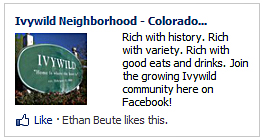I’ve been doing marketing and promotion inside local television stations for more than a decade. Nearly everything we do is highly perishable, especially in the linear broadcast. It must affect my mindset, because two instances today – neither especially profound – open-hand slapped me in the face with the idea of permanence.
These instances immediately took me back to a Vaynerchuk take (find it at 19:30) on staying mindful of the fact that our great great grandchildren will be able to see much of what we do.
Instance 1: The final button on an interesting little case study by Darren Dahl in Inc. about a legal and PR crisis faced by Tagged. I won’t go into the details of the saga, brief as it was, and will instead go straight to the closing quote. “‘In the age of Google, bad press stays forever,’ says (CEO Greg) Tseng. ‘This incident will be a part of Tagged’s legacy forever.'”
Instance 2: A blog post from Alexandra Levit titled “Google is Forever,” in which she runs down a young man’s persistent haunting by the press generated by a wildly anti-gay Facebook page he started with blind, youthful enthusiasm in his college days. You can delete the page, but you can’t delete the press. He professes great embarrassment it now and alleges it’s prevented him from being hired recently. (Note: the post was brought to my attention by Dan Schawbel)
The takeaway: We’re building our legacy every day, one decision at a time. Whatever’s online is testimony to that legacy.
And just for fun … a 3 year old rant (and I mean rant in the best way) on legacy vs currency:

